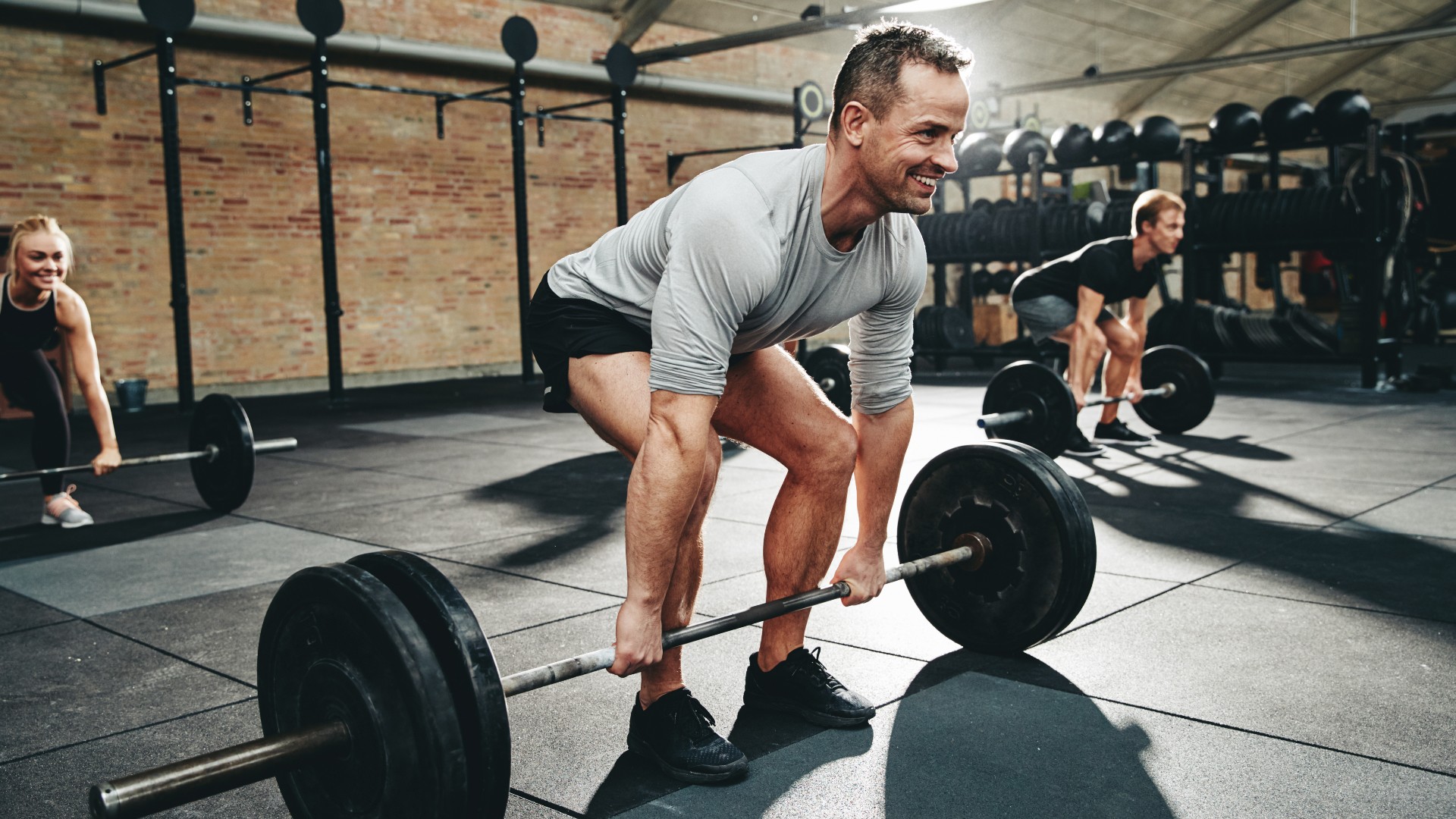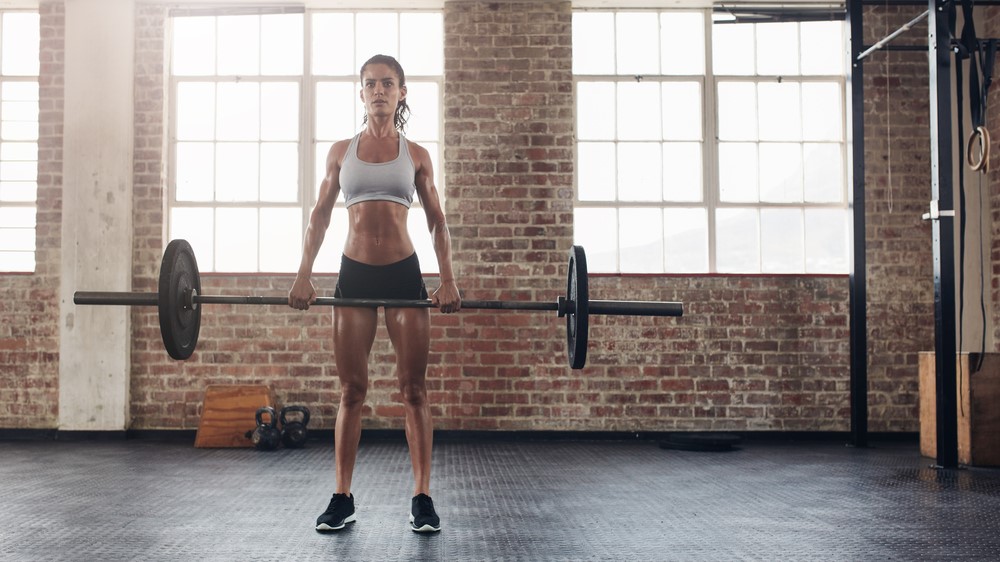
If your gym goals include building muscle or strength, progressive overload training should be your priority. After all, if your muscles aren’t being challenged, they can’t adapt, grow or get stronger.
If you’re finding progress has slowed down in the gym, or your strength program is getting stale, then you might be experiencing a training plateau. Progressive overload training techniques gradually adapt variables like weight, sets, reps, rest, or tempo to put muscles under more tension, forcing the musculoskeletal system to adapt and get stronger.
But progressive overload doesn’t just apply to strength training. Below, we discuss what it is, the benefits, and how to do it yourself — whether you use the best adjustable dumbbells, other free weights, gym machines, or your bodyweight.
What is progressive overload?

Progressive overload doesn’t mean benching 150 lbs one week and 200 lbs the next. When clients are keen to move up too quickly, I respect the hustle and immediately dial it back. Rushing to add more weight only gets you injured, so by incrementally increasing weight instead, your body can build slowly and recover more quickly from stress.
And as frustrating as that might be, I mean increasing load by no more than 10% each time, and only when you can hit your current reps with a few spare in the tank.
When your muscles work hard during workouts, your muscle fibers experience tiny tears. In response, your body goes into healing mode, sending more blood flow to muscles and producing the growth hormone (GH), among other complex processes. Over time, this makes muscles grow.
Current research shows this can occur just 15 minutes after a workout. It’s crucial for muscle growth — a process called hypertrophy — and so gradually, a weight that seemed impossible before could start to feel more comfortable.
Get instant access to breaking news, the hottest reviews, great deals and helpful tips.
Benefits of progressive overload
Although training plateaus are frustrating, they signal that you’re ready to do more. Over time, you’ll notice yourself getting stronger, growing lean muscle mass, and becoming fitter. Even though it’s slow, you can begin to expect progress over several weeks and months.
For instance, marathon runners don’t reach 20 miles overnight— they train toward it for months. And those building up to one will first learn how to train for a half marathon. But the payoff for your patience is hitting fitness goals.
4 ways to use progressive overload
There are several ways to try progressive overload that doesn’t mean lifting heavier. We list the 5 best ways to build muscle without lifting heavier weights here, and some research suggests that working muscles to failure is the key to results. Below, we list some popular ways to adopt progressive overload.
If you’re new to exercise, it’s safest to recruit the help of a personal trainer first. They can check your form and help create a tailored training program based on your goals, with incremental adaptations over time.
1. Volume

Changing sets and reps in a ‘typical’ resistance training program increases overall training volume. For example, hypertrophy training usually ranges between 3-4 sets of 8-12 reps per exercise. To increase volume, you could start at 3 sets of 8 reps (24 reps total), then move up to 3 sets of 10 reps (30 reps), and so on.
Alternatively, you could increase your mileage, workout length, or how many times you hit the same distance during aerobic training, like running. However, max strength training tends to follow a more rigid format of fewer reps and higher sets — typically 5-6 sets of 1-6 reps — so while you could increase volume, I prefer focusing on load.
2. Time under tension (TUT) and tempo training
Time under tension refers to how long your muscles work through a range of motion. Slowing an exercise down could increase the difficulty and encourage strength, coordination, and muscle gains — a technique used by weightlifters. One 2016 study found it particularly effective when slowing the eccentric loading time (like the lowering phase of a deadlift).
During high-rep endurance training, you’ll lift lighter and faster if your goal is to improve muscular endurance. Sustained exercise first recruits your slow-twitch muscle fibers, which are more fatigue-resistant while high-intensity training and powerlifting require rapid and powerful movement, recruiting the less fatigue-resistant fast-twitch muscle fibers.
3. Load
Adding load could help you lift heavier and build strength and muscle mass. For example, you’d start with a bench press that you can maintain for a chosen number of reps until you hit failure or close to it — you can find out which applies to you by reading up on high reps vs heavy weights. If you can lift for several reps above that (which could take several weeks to a month), add a few pounds.
If you’re unsure, a good gage is to check you can lift the new weight with good form for your desired reps, and again, the last few should feel tough.
I recommend training all major muscle groups several times per week and adding rest days between. It’s difficult to pin down an exact time frame, but you could expect to make changes every two to four weeks.
Progress also depends on equipment: dumbbells, kettlebells and barbell plates increase by different weight jumps, and a standard gym barbell weighs around 45 lbs without plates.
4. Frequency
If you’ve just started a new exercise program, you might only be training once or twice a week. Another way to use progressive overload training is by gradually adding more sessions into your training week. Again, that doesn’t mean jumping straight from one session to three or more a week — it could mean adding one session every few weeks until you're training four or five times per week.
Verdict
I recommend sticking to a new exercise program for four weeks before making changes. After a few months, you could adopt progressive overload principles every few weeks when your body is ready for it — that means checking your form, changing variables gradually, and checking in with a qualified trainer if you’re unsure.
Your body will need time to recover and adjust, so try to find safe ways to rest, as this is when the real magic is happening. I swear by the best walking workouts, these 5 shoulder stretches to relieve pain, and these hip mobility exercises for hip flexor pain if you need some ideas.
More from Tom's Guide
- I trained like Mark Wahlberg every day for a week, here's my results
- Top 10 compound exercises that work mulitiple muscle groups
- I did weighted side planks for a week, here's what happened to my abs

Sam Hopes is a level 3 qualified trainer, a level 2 Reiki practitioner and fitness editor at Tom's Guide. She is also currently undertaking her Yoga For Athletes training course.
Sam has written for various fitness brands and websites over the years and has experience across brands at Future, such as Live Science, Fit&Well, Coach, and T3.
Having coached at fitness studios like F45 and Virgin Active and personal trained, Sam now primarily teaches outdoor bootcamps, bodyweight, calisthenics and kettlebells.
She also coaches mobility and flexibility classes several times a week and believes that true strength comes from a holistic approach to training your body.
Sam has completed two mixed doubles Hyrox competitions in London and the Netherlands and finished her first doubles attempt in 1:11.
